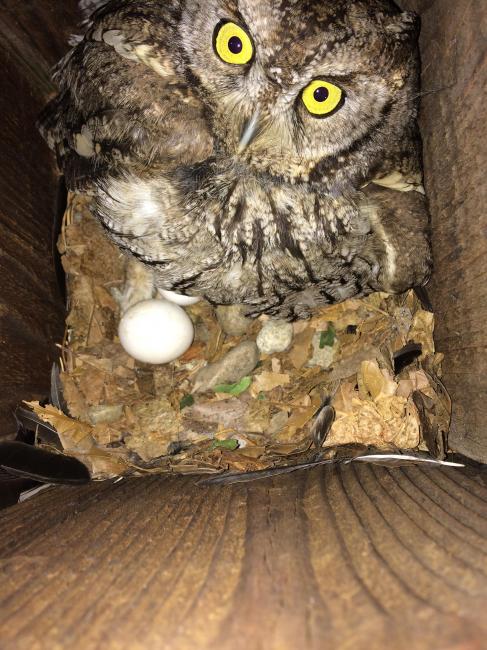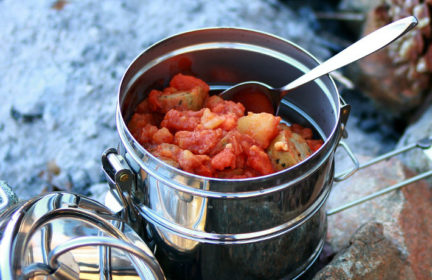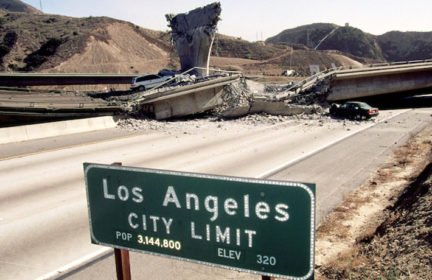Earthquake specific food store question
Hi there,
Brit in WA state. Aware of this earthquake situation, and although I am trying to cover all emergency my bases, earthquake seems like a good one to be ready for.
I have a couple of questions about food storage that I would really appreciate people who have more experience than I do to chime in on.
I would like to keep my longer term food stores in the garage (concrete slab), but we have an apartment above it so the whole thing really could come down. Thing is, everytime I put anything even slightly edible in a sealed plastic bucket in the garage mice start chewing thier way through.
1. Is it just a ‘find a rodent impenetrable chest’ that is about the right size’ situation? In which case any recommendations?
2. Where do I keep it in the garage obviously near a door / window, and the furthest up any slopes, but what is the best way to not get stuff buried in an earth quake.
Forgive me if this question has already been asked, I did my best to search around in old comments for something similar, I’m sure I just missed it, so any links to old conversations I’d also be grateful for.
Thank you kindly,
G.
-
Comments (26)
-
Gideon ParkerStaff - February 8, 2022
Here are two previous forum threads that might help you out with your situation:
If I was in your situation and had to store things in the garage, I would implement humane or killing traps around in your garage to be a layer of defense to protect your food. Maybe that solves your issue in time and you don’t have to go out and buy metal or thick plastic totes to place your food in.
I would also build some very sturdy and strong 2X4 shelving and secure it to a wall. Place bungie cords or another material around the shelves to prevent food falling off during a quake.
Those forum posts I linked to will explain further some more ideas that people have had. Best of luck and keep us updated on what you do!
-
Geezer - February 15, 2022
Thank you!
-
-
hikermor - February 8, 2022
I reside in southern California, so I am thinking about EQs, as well. My approach is to disperse my supplies, including food. The situation and extent of destruction following a shaker is essentially unpredictable, so I don’t want to have all my eggs in one basket, so to speak.
Well built wooden frame construction is best for EQ resistance; masonry not so much. Mirrors on the ceiling are not a good idea….
-
pnwsarahContributor - February 8, 2022
Hi G.,
So I’m hesitant to recommend this, because I don’t know how rodent proof they actually are, but we store some of our emergency supplies in “Action Packer” 24- or 35-gallon bins (can’t remember which size off the top of my head). The only reason we have them is that my husband used them to store supplies at his research field sites in grad school. He and one of his collaborators kept their experiment running for like a decade, so these bins were literally sitting out in some very exposed, rodent-y conditions, full of supplies, for ten years, and nothing in them was ever contaminated or damaged. True, their field gear did not include snacks, but my husband is so adamant that the Action Packers are rodent proof that he convinced me to keep our disaster supplies in them in the backyard when we first moved up to the PNW. I lined them with contractor bags that I sealed, and that worked to keep out rain and rodents (which we definitely have in our backyard) for something like a year. I eventually moved the Action Packers inside because I felt like ants were an inevitability and didn’t want to have to deal with that mess, but nothing more than a lone spider ever actually got in.
Where to store stuff in the garage is harder, but I think Gideon and hikermor have good suggestions. The only other thing I can think of is to see if there are any seismic retrofit contractors in your area who give free or low-cost consultations and see if you can wrest some info. out of them about the structural vulnerabilities of your garage. As hikermor said, wood framed buildings are generally pretty earthquake resilient, so I wouldn’t be super-worried about a total collapse if that’s what you have, but garage doors are also big openings and can be weaker than other parts of the building, especially in older construction.
Best of luck!
S
-
hikermor - February 9, 2022
I keep some of my items in Action Packers which are stored outside underneath hedges, etc, and fully exposed to the SoCal environment. I do seal the lid/box joint with duct tape. to keep out bugs, etc. No signs of rodent activity over several years…
-
Bradical - February 9, 2022
You could easily keep a month of food in an Action Packer and store that at the far end of your yard away from the house. Then if your house collapses you have enough food until you could have a crew come over and dig out the rest of your food.
When thinking about your garage situation, if there was a minor quake that perhaps didn’t collapse the entire floor above but just bent and broke the garage door, it would be good to store some drop cloth plastic rolls and duct tape so you could then seal off the garage opening from the elements. You may also have windows breaking as well, so sealing those off is important to protect your house further from rain or cold.
-
-
Amy S. - February 8, 2022
I too have been thinking about this and trying to prep with EQs in mind.
As for rodents, I have had good luck with putting stuff in Behren’s trash cans. They hold a lot, are quite sturdy, and are readily available at hardware stores.
I’m hoping my garage will withstand an earthquake, so I’m working on keeping debris (falling around and on top of stuff) to a minimum. I have added support brackets to cabinets, and have added ways to keep cabinet doors shut. I remember when the Loma Prieta earthquake struck, everything shook out of the kitchen cabinets at my parents’ house. (I’m not exaggerating, every dish and glass smashed on the ground.). I have friends who couldn’t get into their garage because so much debris had fallen and blocked the door. I’d love to keep that from happening so I would have ready access to what I need, including being able to get my car out of the garage if necessary.
And, like hikermor, I have dispersed my supplies.
-
Barb LeeContributor - February 9, 2022
[comment deleted]-
Geezer - February 15, 2022
I won’t use poison because I need the owls / coyotes etc not to be poisoned by eating the contaminated mice and mess up the ecosystem even more, they do a much better job of keeping rats and mice numbers down than a few snap traps. We do use traps, but the thing is that they fill up quite quickly and we dont ever have a problem UNLESS we are storing food. It attracts them. I like the jars in totes idea but I feel like food sealed in canning jars is a different situation than say a bag of rice.
-
pnwsarahContributor - February 15, 2022
Agree on protecting natural rodent predators (and am 100% fine with using snap traps in addition), and I wonder if one could take that a step further and encourage them with, say, an owl box? I know a farmer who successfully attracted a pair of barn owls to his operation that way.
-
Gideon ParkerStaff - February 16, 2022
I love that idea of putting in place an owl box to attract owls. I Googled owl box and came across this gem:
Owls are cool! And pretty funny too.
-
-
TraceContributor - February 9, 2022
Under the category of dispersing of supplies, what about at another location? Maybe a nearby friend or relative that may have a better setup or different risks in their area? Maybe you stage some supplies at each other’s homes assuming that at least one place will make it? Sometimes thinking outside of the box is thinking outside of the residence.
For rodents we’re big fans of cats. We have a barn and also a detached garage. If you have animal feed you have rodents — so we have several barn cats, and also our dogs that keep the rodent populations to a minimum (even gophers).
-
Geezer - February 15, 2022
Barn cats just feed the coyotes around here… but the neighbor idea is very helpful.
-
-
Pops - February 11, 2022
I’ll second the metal trash cans as a cost effective rodent measure. Combine with Mylar bags, etc. Use double layered cardboard containers for some EMP protection of electronics in the can too—seal with real metal duct tape.
I would pick the most outside wall in my garage, the one least likely to be buried by the neighbor’s house or upper floors. Corners have extra bracing that may be beneficial (or harder to excavate). Be sure the area is devoid of mechanicals (power, water, HVAC). Maybe even under a window because they have more framing to support any uncollapsed structure when you are excavating.
I’d build a “workbench” using lots of 2x4s, maybe doubled as “studs” and tripled as “beams” and set just far enough apart to fit several garbage cans. Use lots of framing nails or screws and I’d give it a heavy top. You want to be able to excavate from the exterior and even access the cans without removing the workbench top if necessary so think about that as you are building.
Then, I’d bury my excavation tools outside. Hit some yard sales for hammers, sledge, crowbars, handsaws, gloves, boots, etc and a plastic garbage can to seal everything in. Fill it up!
The downside to the garage is stores like the temperature to be low and even. But bound to be better than waiting on someone to repair I-5.
-
TraceContributor - February 12, 2022
There are some great ideas in there — very doable. Burying the needed tools was an interesting “thinking outside the box/garage” idea.
-
hikermor - February 12, 2022
I am skeptical about burying tools – in an EQ, you have ground shifts and buried tools might be damaged or broken. You need tools handy and digging them up takes time and effort. I keep a sturdy prybar undeer the bed and multitools in my nightstand and my fingers crossed….
-
pnwsarahContributor - February 12, 2022
I like all of Pops’ comments about where the garage is likely to be strongest— corners, under windows, etc. I also like the idea of leveraging yard sales for deals on tools so that you have multiples without breaking the bank.
As to burying/not burying, I think the real question is, where in WA are you and what are the liquefaction and landslide risks on/around your property? Whatever state agency is in charge of geology and hazards mapping should have a public GIS or at least maps that describe liquefaction risk, known and historic landslides and landslide-prone areas, and ground shaking intensity from a CSZ event and other likely earthquake scenarios, e.g., Seattle Fault (OR does this and WA is richer than OR; also USGS does useful stuff: https://pubs.er.usgs.gov/publication/ofr20071175). Seattle is in an alluvial basin that is expected to amplify ground motion from a CSZ or more local earthquake, but there probably won’t be a lot of structural failures (at least of buildings like residential detached garages) outside extra-shake-prone areas like that. My geologist friend frequently assures me that just being as far inland as the I-5 corridor in OR/WA is enough to attenuate the shaking from a CSZ considerably. It will still be strong enough to do a lot of damage, but that damage will be associated with specific structural or geologic risk factors, like unreinforced masonry construction, soft stories, liquefaction-prone soils, landslide hazard areas, and alluvial basins. Smaller faults like the Seattle and the Portland Hills will cause more intense local ground motion, but the max. magnitude on those is lower than the CSZ.
All this to say… I don’t think there will be so much debris everywhere and so much collapse that you need to bury tools— or that buried tools will be wrenched apart by the violent motion of the earth… unless you’re in some specifically, particularly dangerous location, in which case there are probably bigger things to worry about!
-
Robert LarsonContributor - February 12, 2022
If burying tools, make sure to oil the heck out of them to prevent rust, and make sure the container is water tight!
Oh, and don’t have your only shovel to retrieve your buried stash be located in your garage that just collapsed…
I would rather keep the tools in the plastic garbage can and stick it behind a bush than go to the hassle of burying it.
-
Geezer - February 17, 2022
thanks pops – this is really helpful
-
-
Alicia - February 11, 2022
I too have to plan for earthquakes in SoCal. Like Pops mentioned, I store most of our earthquake supplies (camping items like tents, sleeping bags, and a bucket of freeze dried meals) on a shelf that I installed above the rolling garage door (exterior wall) and have yet to install the bungee system I plan to keep it from falling off in a tremor. If the house is structurally compromised, I can break the windows or even break through the exterior wall with tools I store outdoors. The water is on an exterior niche of the house.
I’ve not had issues with critters in our garage but outdoors, the ground squirrels chewed through a double walled Rubbermaid storage bin full of hay. I can’t imagine how quickly they would do it for actual food – that would be sealed better, though. I learned and now store seeds and peanuts for the bird feeders in these birdseed metal buckets. Similar to a Behran’s with a the handle locking lid, but the lid’s loop is welded on instead of through a slit so it doesn’t leak in a heavy rain. So far the squirrels have investigated, but not gotten in. There’s now a smaller version with a positive latch but it’s significantly more expensive.
-
Shaun - February 12, 2022
This is a very difficult problem to solve because the trade off is between access to supplies in the event the house falls down and the condition of the supplies.
I once stored a good quantity of bucketized food in a storage garage for a year on the East Coast and it was almost all ruined by the end of the year. It just got too hot in the summer and froze in the winter. Very little food can tolerate the temperatures at either end.
Since then, I have stored all our food supplies in the basement at 55-65F year round. We also have a cat and he keeps all pests out.
I am more at risk of a tornado than a earthquake so I accept the risk I may lose my supplies or have to dig them out if the house is compromised in an earthquake.
But if an earthquake was a significant risk I would avoid the garage as much as possible. I would dig a hole, like the well pump holes you see, and put a prefabricated shed over it. A 5′ or 6 ‘ hole with 18″ of stone floor would allow you to store whatever waterproof containers you have in a much more temperature controlled environment.
Yes, the shed and hole would cost some money but that would offset the need to replace your food stock every year.
-
Pops - February 13, 2022
You’re probably right, Shaun.
-
Magic 8 Ball - February 14, 2022
Keeping your food in the basement is the best plan if you are in tornado country. Storing it in a garage would just mean it gets blown a mile away. I’d rather dig it out than search for it along the tornado’s path.
-
Geezer - February 15, 2022
This is really helpful thank you.
-
-
Scott Byron - February 13, 2022
I keep my food supplies in plastic tubs that have some kind of a seal and never had problems with rodents but I also make sure that nothing stored in there gives off a smell. Maybe I’m just lucky, or maybe my strategy works, who knows.
-
Geezer - February 15, 2022
Rats get through those heavy duty plastic buckets around here…
-
-
- News for the Week 2026-01-05 - 7 days ago
- News for the Week 2025-12-29 - 2 weeks ago
- News for the Week 2025-12-22 - 3 weeks ago
- News for the Week 2025-12-15 - 4 weeks ago
- News for the Week 2025-12-08 - 1 month ago
This forum is heavily moderated to keep things valuable to as many people as possible. Full community policies are here. The basics:
- 1. Be nice to each other.
- 2. Stay focused on prepping.
- 3. Avoid politics, religion, and other arguments.
- 4. No unfounded conspiracies, fake news, etc.
- 5. Debate ideas, not people.


